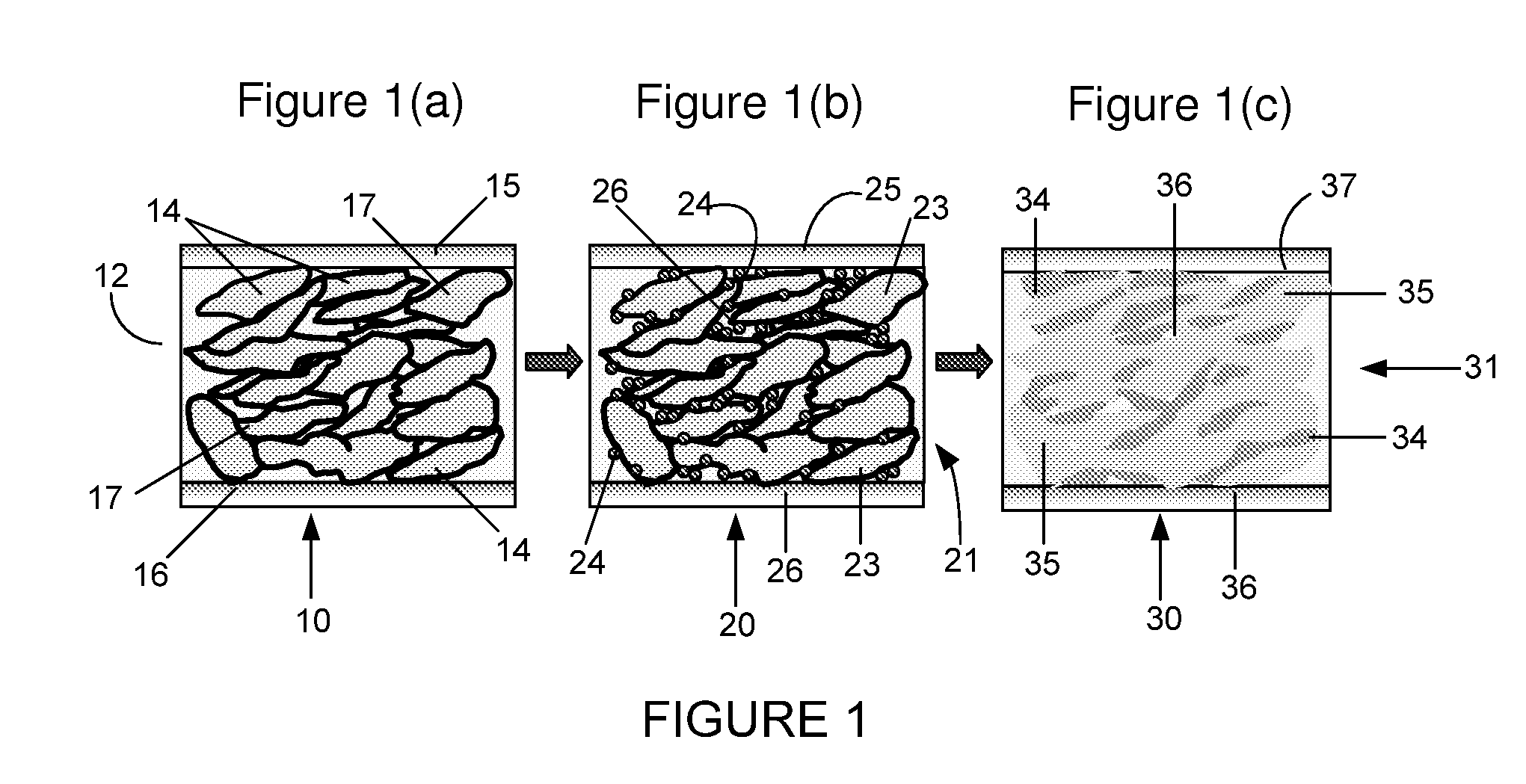Conductive polymer composites
a polymer composite and conductive technology, applied in the direction of non-metal conductors, conductors, metal/alloy conductors, etc., can solve the problems of long known health hazards to human beings, conventional eca's have significantly lower electrical conductivity than sn/pb solder connections,
- Summary
- Abstract
- Description
- Claims
- Application Information
AI Technical Summary
Problems solved by technology
Method used
Image
Examples
example 1
Preparation and Analysis of Surface Functionalized Silver Nanoparticles
[0043]The molar ratio of silver nanoparticles to diacid was set to 1:1. A solution of the nanoparticles, diacid, and ethanol was sonicated for 2 hours. From the TEM studies, there are no changes for the average size and size distribution of silver nanoparticles after sonication for two hours due to the existence of surfactants. In this example, the surfactants bonded on the nanoparticle surface may prevent the nanoparticles from growing, agglomerating, or adhering. The solution was centrifuged to remove the solvent and unreacted diacid. These surface functionalized silver nanoparticles were rinsed three times by solvent. Finally, the surface functionalized silver nanoparticles were dried in a vacuum chamber for 24 hours at room temperature.
[0044]The Differential Scanning Calorimetry (“DSC”) and Thermogravimetric Analysis (“TGA”) curves of the silver nanoparticles treated by diacids are shown in FIG. 3. In the fir...
example 2
Preparation of Polymer Composites
[0048]Composite precursors were prepared by mixing different molar ratios of surface functionalized silver nanoparticles and silver flakes with the polymer precursor comprising a mixture of bisphenol A and hexahydro-4-methylphthalic anhydride. The composite precursor was sonicated for one hour and then the catalyst was incorporated. The composite precursor was again sonicated for 5 minutes.
example 3
Characterization of the Surface Functionalized Silver Nanoparticles
[0049]Thermogravimetric Analysis (TGA, 2050 from Thermal Advantages Inc.) was used to investigate the weight loss of the surface functionalized silver nanoparticles. The debonding temperature between the surfactant and silver nanoparticles was determined by a standard differential scanning calorimeter (DSC, TA Instruments, model 2970). A sample of about 10 mg of surface functionalized silver nanoparticles prepared in Example 1 were placed into a hermetically sealed DSC sample pan and placed in the DSC cell under a 40 ml / min nitrogen purge. Non-isothermal scans were made at a heating rate of 5° C. / min. After the non-isothermal scan, the sample was cooled to room temperature and then re-scanned under the same condition. For morphology studies, field emission scanning electron microscopy (FE-SEM, JEOL 1530) was used.
PUM
 Login to View More
Login to View More Abstract
Description
Claims
Application Information
 Login to View More
Login to View More - R&D
- Intellectual Property
- Life Sciences
- Materials
- Tech Scout
- Unparalleled Data Quality
- Higher Quality Content
- 60% Fewer Hallucinations
Browse by: Latest US Patents, China's latest patents, Technical Efficacy Thesaurus, Application Domain, Technology Topic, Popular Technical Reports.
© 2025 PatSnap. All rights reserved.Legal|Privacy policy|Modern Slavery Act Transparency Statement|Sitemap|About US| Contact US: help@patsnap.com



